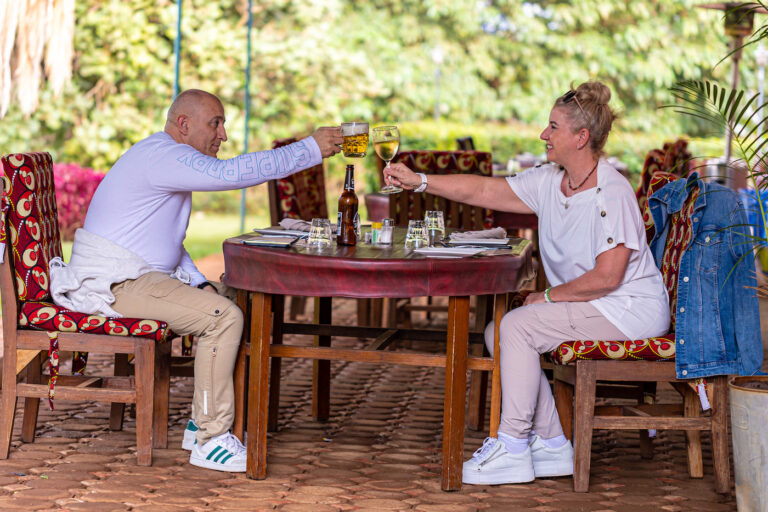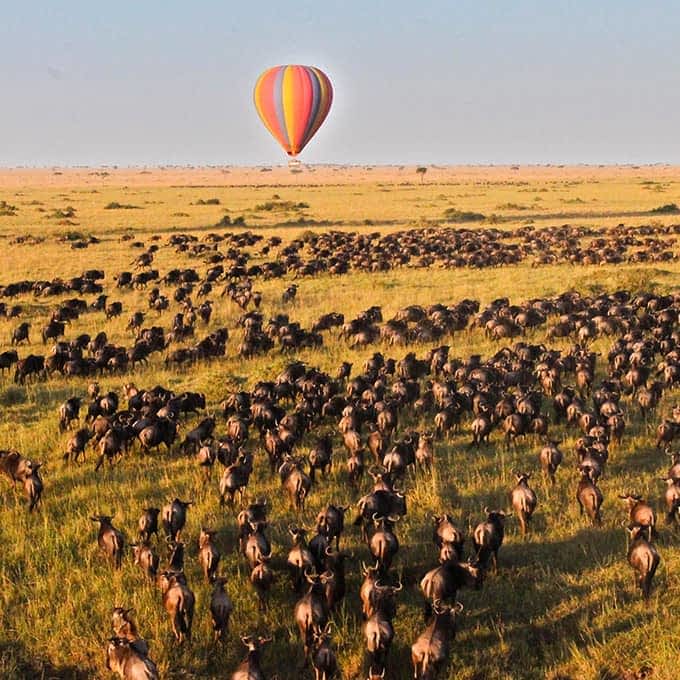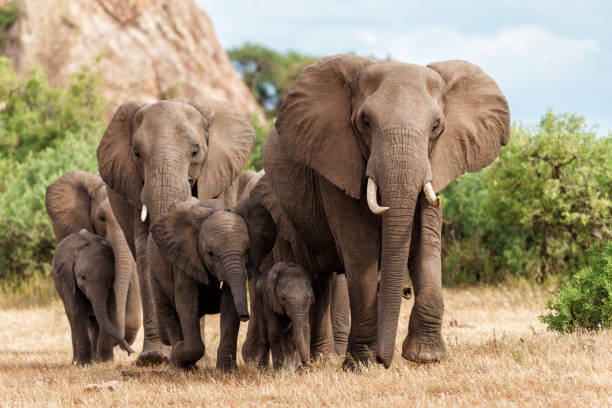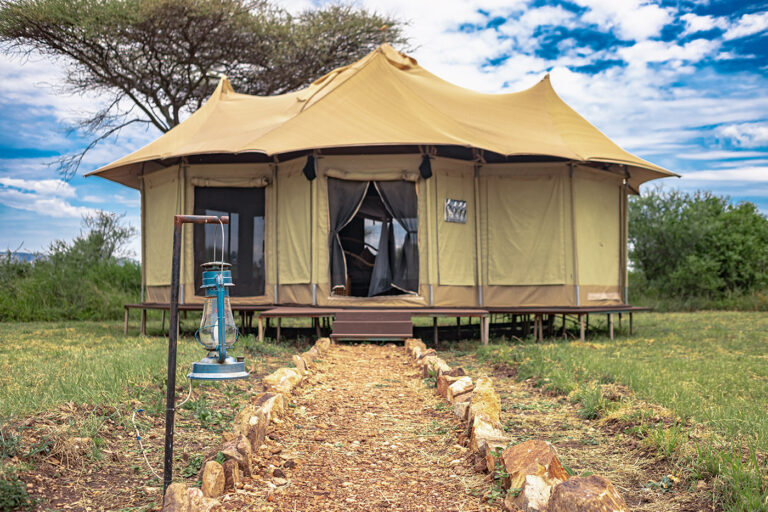Walking Safaris in Tanzania: Best Trails and Camps for On-Foot Adventures
For adventure-seekers and nature enthusiasts, walking safaris in Tanzania offer an unparalleled way to experience the country’s breathtaking wilderness up close. Unlike traditional vehicle-based safaris, guided bush walks allow you to immerse yourself in the sights, sounds, and scents of the African bush, forging a deeper connection with the environment. From the rugged landscapes of Ruaha National Park to the lesser-known trails of southern Tanzania, this comprehensive guide explores the best trails, top camps, and essential tips for unforgettable guided bush walks in Ruaha and foot safaris in southern Tanzania parks. Whether you’re tracking wildlife or marveling at ancient baobabs, a walking safari in Tanzania promises an authentic and thrilling adventure.
Why Choose a Walking Safari in Tanzania?
Walking safaris provide a unique perspective on Tanzania’s diverse ecosystems, offering experiences that vehicle safaris can’t match. Here’s why walking safaris in Tanzania are a must for adventurers:
- Intimate Wildlife Encounters: On foot, you’ll notice subtle details—animal tracks, birdsong, and plant life—that are often missed from a vehicle. Guided by experts, you can safely observe wildlife like antelopes, elephants, and even predators from a respectful distance.
- Eco-Friendly Exploration: Walking safaris have a lower environmental impact, aligning with sustainable tourism goals and allowing you to support conservation efforts.
- Cultural Insights: Many trails pass near local communities, offering opportunities to learn about Maasai or Hadzabe traditions, adding cultural depth to your adventure.
- Physical and Mental Connection: Walking through the bush engages all your senses, fostering a profound connection to nature and a sense of accomplishment.
- Access to Remote Areas: Foot safaris in southern Tanzania parks like Ruaha and Selous allow you to explore less-visited regions, ensuring a private and authentic experience.
Best Trails for Walking Safaris in Tanzania
Tanzania’s national parks and reserves offer a variety of trails suited for different skill levels and interests. Below are the top trails for walking safaris in Tanzania, with a focus on guided bush walks in Ruaha and foot safaris in southern Tanzania parks.
- Ruaha National Park: Mwagusi River Trail
- Location: Ruaha National Park, southern Tanzania
- Distance and Duration: 3–5 km, 2–3 hours
- Highlights: This trail follows the Mwagusi River, a hotspot for wildlife like elephants, lions, and leopards. You’ll walk through riverine forests and open savannas, guided by expert rangers who point out tracks and animal behavior. The trail is ideal for spotting rare antelopes like the greater kudu and sable.
- Difficulty: Moderate, suitable for most fitness levels with some uneven terrain.
- Best Time: June–October (dry season) for optimal wildlife viewing and comfortable walking conditions.
Why It’s Special: The Mwagusi River Trail offers a balance of adrenaline and serenity, with chances to see big cats and learn about the park’s unique flora, such as baobab trees.
- Selous Game Reserve: Sand Rivers Walk
- Location: Selous Game Reserve (now Nyerere National Park), southern Tanzania
- Distance and Duration: 4–6 km, 3–4 hours
- Highlights: This trail winds along the Rufiji River, where you can spot hippos, crocodiles, and vibrant birdlife. The walk includes open grasslands and dense woodlands, offering a diverse ecosystem to explore. Armed rangers ensure safety while sharing insights about the reserve’s conservation efforts.
- Difficulty: Moderate to challenging, with some sandy and rocky sections.
- Best Time: July–October for dry trails and abundant wildlife.
Why It’s Special: Selous is one of the largest wilderness areas in Africa, and this trail provides a rare chance to explore its untouched landscapes on foot, perfect for foot safaris in southern Tanzania parks.
- Arusha National Park: Mount Meru Foothills Trail
- Location: Arusha National Park, northern Tanzania
- Distance and Duration: 5–7 km, 2–3 hours
- Highlights: This scenic trail offers views of Mount Meru and encounters with colobus monkeys, giraffes, and flamingos at Momella Lakes. The walk is less intense than southern park trails, making it ideal for beginners or those combining a safari with a Kilimanjaro climb.
- Difficulty: Easy to moderate, with well-maintained paths.
- Best Time: June–February, with January–February offering lush greenery.
Why It’s Special: Its proximity to Arusha makes it an accessible option for travelers seeking a shorter walking safari in Tanzania before heading to Serengeti or Ngorongoro.
- Katavi National Park: Chada Plains Walk
- Location: Katavi National Park, western Tanzania
- Distance and Duration: 6–8 km, 3–4 hours
- Highlights: Katavi’s remote location ensures an exclusive experience. This trail crosses floodplains where you’ll see massive herds of buffalo, elephants, and hippos. Expert guides teach tracking techniques, enhancing the adventure.
- Difficulty: Moderate to challenging, due to longer distances and remote terrain.
- Best Time: August–October for peak wildlife concentrations.
Why It’s Special: Katavi’s low visitor numbers make it a hidden gem for foot safaris in southern Tanzania parks, offering solitude and raw wilderness.
- Serengeti National Park: Moru Kopjes Trail
- Location: Serengeti National Park, northern Tanzania
- Distance and Duration: 3–4 km, 2 hours
- Highlights: This trail explores the granite kopjes (rocky outcrops) of the Serengeti, home to lions and leopards. You’ll also see ancient rock paintings by the Maasai, blending wildlife with cultural history.
- Difficulty: Easy to moderate, with some climbing on rocks.
- Best Time: June–October for migration viewing and dry trails.
Why It’s Special: Combining wildlife and cultural elements, this trail offers a unique walking safari in Tanzania experience in the iconic Serengeti.
Top Camps for Walking Safaris in Tanzania
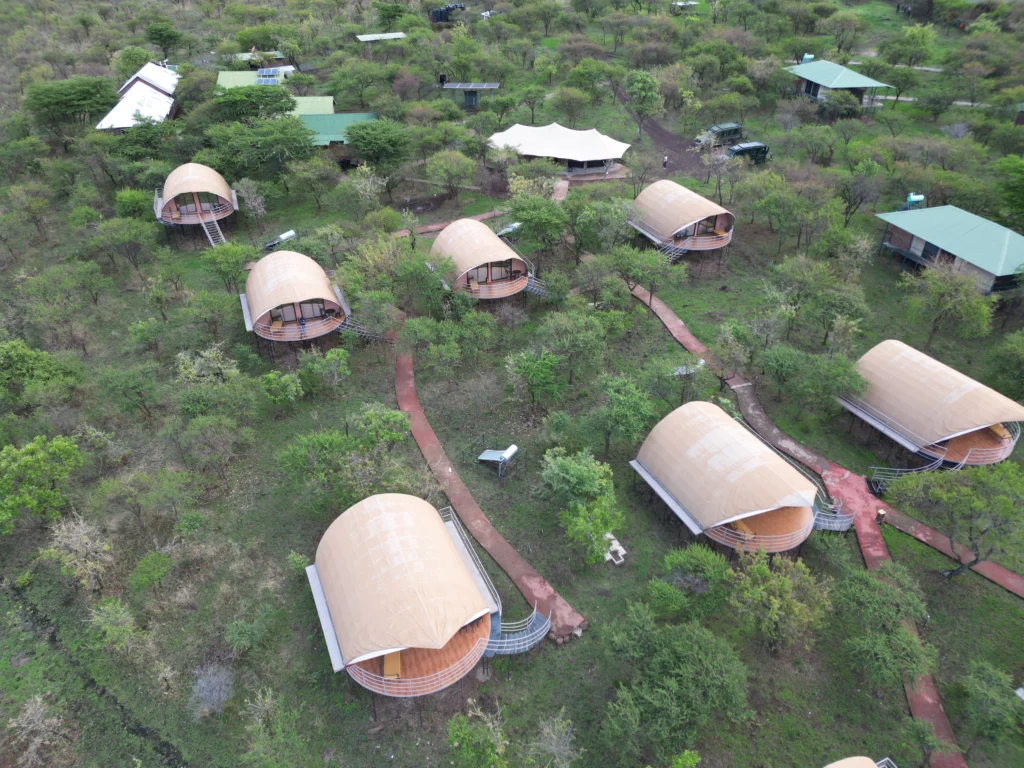
Staying at the right camp enhances your walking safari experience, providing comfort, safety, and expert guides. Below are the best camps for guided bush walks in Ruaha and foot safaris in southern Tanzania parks, along with northern options.
- Mwagusi Safari Camp (Ruaha National Park)
- Location: Along the Mwagusi River, Ruaha
- Why Stay Here: This eco-friendly camp is renowned for its expert-led guided bush walks in Ruaha, offering intimate wildlife encounters. Tents feature private verandas, en-suite bathrooms, and open-air showers, blending luxury with adventure.
- Walking Safari Highlights: Daily walks along the Mwagusi River Trail, with chances to track elephants and learn about medicinal plants.
- Romantic Touch: Private bush dinners under the stars, perfect for couples.
- Price: $400–$700 per person per night, including walks and meals.
Why It’s Ideal: Its focus on walking safaris and small group sizes ensures a personalized experience.
- Sand Rivers Selous (Nyerere National Park)
- Location: Rufiji River, Selous Game Reserve
- Why Stay Here: This luxury lodge specializes in foot safaris in southern Tanzania parks, with expert guides and armed rangers. Spacious suites offer river views and private plunge pools.
- Walking Safari Highlights: The Sand Rivers Walk includes riverine and savanna ecosystems, with sightings of hippos and rare wild dogs.
- Unique Feature: Combine walking safaris with boat excursions for a diverse adventure.
- Price: $500–$900 per person per night, including activities.
Why It’s Ideal: The remote location and variety of activities make it a top choice for southern Tanzania adventures.
- Nomad Tanzania’s Chada Katavi (Katavi National Park)
- Location: Chada Plains, Katavi
- Why Stay Here: This intimate camp offers exclusive foot safaris in southern Tanzania parks, with only six tents for maximum privacy. The camp’s rustic charm includes canvas tents and bucket showers, immersing you in the wilderness.
- Walking Safari Highlights: Explore the Chada Plains, tracking buffalo herds and learning survival skills from guides.
- Eco-Friendly: Solar-powered and committed to conservation.
- Price: $600–$1,000 per person per night, including walks.
Why It’s Ideal: Katavi’s isolation ensures an authentic, crowd-free walking safari experience.
- Tanzania Wild Camps’ Serengeti Safari Lodge (Serengeti National Park)
- Location: Central Serengeti
- Why Stay Here: Part of Tanzania Wild Camps, this lodge offers guided walks around the Moru Kopjes, complemented by luxury tents with modern amenities.
- Walking Safari Highlights: Short walks to explore kopjes and Maasai rock art, ideal for combining with game drives.
- Added Perks: Stargazing sessions and cultural visits to Maasai villages.
- Price: $350–$600 per person per night, including walks and meals.
Why It’s Ideal: Perfect for travelers wanting a mix of walking and vehicle safaris in the Serengeti.
- Ngorongoro Wild Camp (Ngorongoro Conservation Area)
- Location: Ngorongoro Crater rim
- Why Stay Here: Operated by Tanzania Wild Camps, this camp offers gentle walking safaris along the crater rim, suitable for beginners. Tents feature cozy interiors and stunning views.
- Walking Safari Highlights: Guided walks with views of the crater and encounters with buffalo and antelopes.
- Cultural Add-On: Maasai village visits for a cultural twist.
- Price: $300–$550 per person per night, including walks.
Why It’s Ideal: Its accessibility and scenic trails make it a great introduction to walking safaris in Tanzania.
Planning Your Walking Safari: Essential Tips
To ensure a safe and rewarding walking safari in Tanzania, follow these tips:
- Best Time to Go
- Dry Season (June–October): Ideal for clear trails, abundant wildlife, and comfortable temperatures. Perfect for guided bush walks in Ruaha and foot safaris in southern Tanzania parks.
- Green Season (November–May): Lush landscapes and fewer crowds, but some trails may be muddy. Opt for northern parks like Arusha or Serengeti during this period.
- Safety Guidelines
- Follow Your Guide: Always stay close to your armed ranger or guide, who is trained to handle wildlife encounters.
- Wear Neutral Colors: Avoid bright clothing to blend into the environment and avoid startling animals.
- Stay Quiet: Keep noise to a minimum to enhance wildlife sightings and respect the bush’s tranquility.
- Packing Essentials
- Footwear: Sturdy, closed-toe hiking boots with good grip.
- Clothing: Lightweight, long-sleeved shirts and pants in neutral tones (khaki, olive, or beige).
- Gear: Binoculars, a small backpack, sunscreen, insect repellent, and a reusable water bottle.
- Camera: A lightweight camera with a zoom lens for capturing wildlife and landscapes.
- Health Precautions
- Vaccinations: Ensure you have yellow fever, typhoid, and hepatitis A vaccinations. Consult your doctor 6–8 weeks before travel.
- Malaria Protection: Use mosquito repellent and consider prophylactics, especially in southern parks during the green season.
- Fitness Level: Most trails are moderate, but check with your camp to ensure the walk matches your fitness level.
- Booking with Tanzania Wild Camps
For a seamless experience, book through Tanzania Wild Camps, which offers tailored walking safari packages. Their camps, like Serengeti Safari Lodge and Ngorongoro Wild Camp, provide expert guides and eco-friendly accommodations. Visit tanzaniawildcamps.com to plan your adventure.

Combining Walking Safaris with Other Adventures
Enhance your walking safari in Tanzania with these complementary experiences:
- Game Drives: Combine walks with vehicle safaris for a comprehensive wildlife experience, available at camps like Mwagusi and Sand Rivers.
- Cultural Tours: Visit Maasai or Hadzabe communities to learn about their traditions, offered by Tanzania Wild Camps.
- Zanzibar Extension: After your walking safari, relax on Zanzibar’s beaches for 3–5 days, with resorts like Zuri Zanzibar offering diving and spa experiences.
- Hot Air Balloon Rides: Soar over the Serengeti or Ruaha for a bird’s-eye view, available through many luxury camps.
Frequently Asked Questions (FAQs)
Are walking safaris in Tanzania safe?
Yes, with trained guides and armed rangers, walking safaris are safe. Always follow your guide’s instructions and stay alert.
What is the best park for a walking safari in Tanzania?
Ruaha and Selous (Nyerere) are top choices for guided bush walks in Ruaha and foot safaris in southern Tanzania parks due to their remote trails and diverse wildlife. Serengeti and Arusha are great for shorter walks.
How fit do I need to be for a walking safari?
Most trails are moderate, requiring basic fitness. Some southern park trails, like Katavi’s, are more challenging. Discuss your fitness level with your camp to choose the right trail.
What wildlife can I expect to see on a walking safari?
You may see elephants, buffalo, antelopes, birds, and occasionally predators like lions or leopards, depending on the park and season.
How do I book a walking safari with Tanzania Wild Camps?
Visit tanzaniawildcamps.com/book-now to customize your walking safari itinerary, including stays at Serengeti Safari Lodge or Ngorongoro Wild Camp.
Walking safaris in Tanzania offer an exhilarating way to experience the country’s wild heart, from the rugged trails of Ruaha to the pristine wilderness of Selous and Katavi. Whether you’re tracking elephants on guided bush walks in Ruaha or exploring foot safaris in southern Tanzania parks, camps like Mwagusi Safari Camp, Sand Rivers Selous, and Tanzania Wild Camps provide the perfect base for adventure and comfort. With expert guides, sustainable practices, and unforgettable trails, your walking safari will leave you with lifelong memories.
Start planning your 2025 adventure today at tanzaniawildcamps.com and step into the wild!



